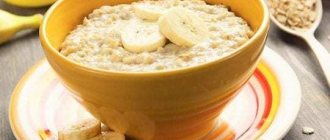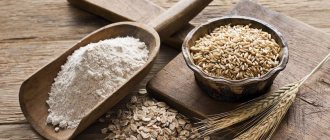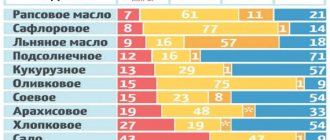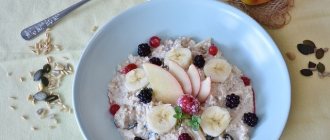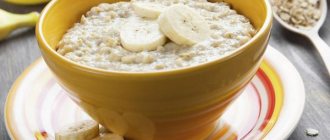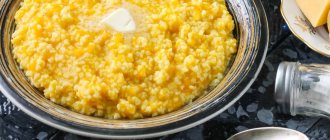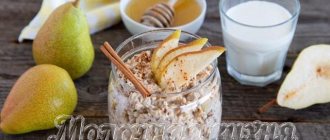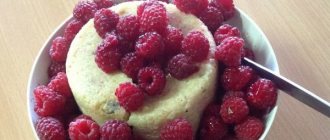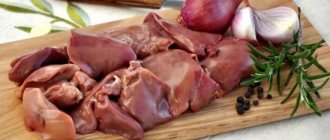Not all cereals are equally healthy: let’s figure out what kind of porridge to eat for breakfast
“Porridge is the best breakfast” is a phrase you have known since childhood. Indeed, a carbohydrate-rich first meal energizes you and helps you stay full until your next snack. But what grains should you use to make porridge to get the maximum benefit? We analyzed nine popular (and not so popular) cereals for their benefits.
Semolina (calorie content in water/milk - 80 kcal/98 kcal per 100 g)
The popular porridge, which the most talented people know how to cook without lumps, is prepared from wheat - it is ground to grains with a diameter of up to 0.5-0.8 mm, and then sifted.
On some packages you can find markings: “T” means that the cereal is made from durum wheat, “M” means soft wheat, and “TM” means from a mixture. Due to its puree-like structure, semolina porridge is easily digestible and cooks quickly, but is inferior to other cereals in many respects. Firstly, semolina porridge can hardly be classified as a slow carbohydrate due to the deep processing of the cereal - it’s easy to gain weight on it, but you won’t stay full for so long.
Secondly, there is also less fiber in semolina, which is necessary for normal metabolism and intestinal health, than in other cereals.
Features of complementary feeding with cereals
Many mothers are interested in the question of how to properly introduce porridge into complementary foods. It is no secret that this process is fraught with many nuances. We advise you to listen to the recommendations of experts:
- If your baby continues to drink breast milk, we recommend feeding him exclusively with a spoon. It is recommended to bottle feed only bottle-fed babies.
- Complementary foods must be given before giving milk or an adapted formula. It is best to do this during the second feeding. It is not recommended to give complementary foods in the evening. After all, during the day it is much easier to track the baby’s reaction to a new product.
- The volume of the first serving should be no more than half a teaspoon. During the next feeding, you can give a full teaspoon. Thus, you will gradually increase the portion to 150-200 g. After 2-4 weeks (this is individual), complementary feeding with porridge completely replaces one feeding.
- New porridge is introduced into the child’s diet every 10-14 days. Please note that these should only be monokashi. Multi-grain treats are introduced into the children's menu only after a few months and only if the new food does not cause allergies or pain in the child.
- The baby does not always immediately perceive a new product. So continue to be persistent and give him a chance to get used to the new taste. If your attempts are unsuccessful within 5-7 days, try offering your child a different type of porridge. The option of adding breast milk or adapted milk formula to a dairy-free option often helps. Also, if you have been cooking for him these days, try giving him porridge from the store.
- The first feeding with dairy-free cereals should consist of a product without added sugar. You can add salt to your food, but just a little. It is believed that the baby, first of all, should get used to the natural taste of dishes. After some time, you can sweeten the food yourself, but still, you shouldn’t get too carried away.
- A few weeks after introducing a new product into the diet, you can add 5 g of oil to standard portions of cereals for the first feeding.
- Many mothers are interested in the question: should they give their baby water during complementary feeding? If you feed him yourself, then you can start giving the baby additional water when one feeding with mother’s milk is replaced by porridge. Formula-fed babies need to be given some water.
If your baby has problems (rashes on the face or body, disorders associated with the gastrointestinal tract), stop introducing complementary foods into his diet. It is also necessary to give the baby an antihistamine in a dosage appropriate to his age category. For example, Suprastin and Fenistil.
Scheme for introducing complementary feeding with cereals
If you are not sure how much cereal you should give your child, this table will help you with this. The scheme for introducing cereals into your baby’s diet will help you decide which portion will be optimal for your child. You can either prepare porridge for the first feeding with your own hands, or buy ready-made products.
| Week/Day | Serving (g) | Preparation and consistency | |
| I | 1 | 1 tsp. (5 g) | porridge 5% in water (5 g of cereal per 100 g of water) |
| 2 | 2 tsp. (10 g) | ||
| 3 | 3 tsp. (15 g) | ||
| 4 | 4 tsp. (20 g) | ||
| 5 | 50 ml (50 g) | ||
| 6 | 100 ml (100 g) | ||
| 7 | 150 ml (150 g) | ||
| II | with 4-5 tsp. (20-30 g) up to 150 g | porridge 10% (10 g of cereal per 100 g of water) | |
| III | addictive | porridge 10% (10 g of cereal per 100 g of water) | |
Porridge rating: the best according to experts and parents
It is extremely difficult for caring parents to choose instant porridge for their little one. Can you trust manufacturers' promises? After all, the range of baby food in stores is impressive. Therefore, we decided to compile for you a rating of the best manufacturers of dairy-free and dairy cereals.
- Among the assortment of the Nestle brand there are both dairy-free and milk porridges with the addition of fruits and berries (it is better to start complementary feeding with the former). They do not contain gluten, which is very important to avoid the development of allergies in the baby. Mothers note the fact that their babies really like Nestlé products; moreover, instant food is well absorbed by the body and does not cause pain in the tummies.
- Parents should also pay attention to the Heinz brand. Among the cereals there are low-allergenic ones, so they can be safely given to a child with a tendency to allergic reactions. There are also dishes intended for older children - multi-grain with various additives. But reviews from parents say that not all products have a homogeneous consistency.
- Gerber porridges are famous for their nutritional value and safety. In addition, they are ideal for first feeding because they have a thinner consistency than others.
- We could not ignore the Hipp company. The composition contains not only cereal flour, but also all the necessary substances. The ready-to-use product has a pleasant, uniform texture.
- One cannot help but say about the good old Malyutka, a friend of many from childhood. The porridges have not only a good consistency, but also a natural taste. In addition, their cost is lower than others.
- Heinz offers high-quality dairy-free cereals that meet all standards and recommendations of pediatricians. There are no preservatives, dyes or other dangerous ingredients among the ingredients. Reviews from parents indicate that the product is well absorbed by the child's body, as it contains plant prebiotics.
- Baby products are also one of the leaders, despite their low cost. Porridges are easy to prepare and retain their original appearance after cooling. Among the company’s assortment you can find dairy options marked “hypoallergenic”. They contain prebiotic complexes and all the necessary vitamins.
- According to parents, Frutonyanya porridges are the optimal combination of cost and quality. Dairy-free treats from this brand can be given to children during early complementary feeding. Experts advise introducing these cereals for the first complementary foods from 4 months
- Semper products also enjoy due respect. Dairy-free cereals contain nothing but crushed cereal. Their line of first complementary foods includes rice and buckwheat.
- Our rating is completed by the Nutrilon brand. You can safely start complementary feeding with hypoallergenic buckwheat porridges.

